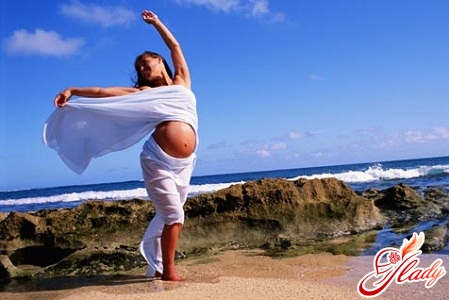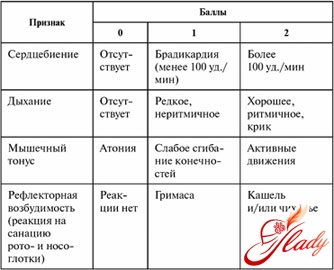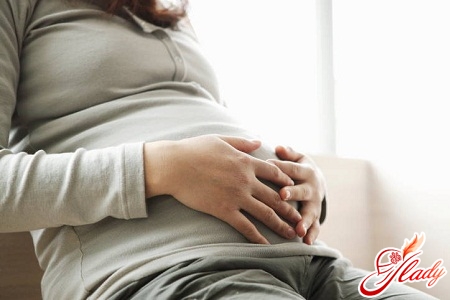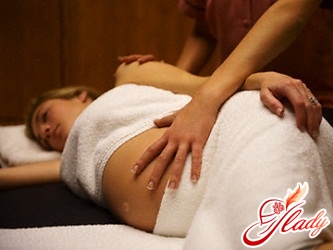 Relaxation of consciousness and muscles - relaxation -is the best way to relieve pain during childbirth. Relaxation helps relieve the tension of the muscles involved in childbirth so that they can stretch more easily; increase the threshold of sensitivity to pain (ie, reduces the perception of pain); reduce the unpleasant sensations during childbirth. In addition, it releases natural hormones that reduce pain; preserves the clarity of reason, which is necessary for making decisions; retains strength, reduces fatigue. Relaxing in the most difficult moments, you retain strength. Muscle tension requires energy, and relaxation relieves tension and redistributes energy to where it is needed most - on the uterus. In addition, the muscles exchange information among themselves. Compressed fists, clenched teeth and jointed eyebrows send stress signals to the muscles of the birth canal, which at this time needs to be relaxed. An open and relaxed mouth indicates that the ancestral ways are relaxed. If the mind is relaxed, then the body relaxes, and vice versa. Interaction of the brain and nerve endings occurs not only through nerve impulses, but also at the hormonal level. Stress hormones produced by the body (catecholamines and cortisone) help the body to adapt quickly to sudden changes. For example, waking up at night from sudden noise, you clearly feel the danger, the brain works, the heart beat becomes faster - you are ready to defend. This is a healthy reaction to stress. But here it is found out that this your cat has jumped unsuccessfully, you relax and again fall asleep. In another case, you can not fall asleep, continuing to listen anxiously and feeling your heart beating loudly. Hormones helped first, but then they began to work against you. Stress turns into distress. Something similar happens during childbirth, because childbirth is, undoubtedly, stress. And most importantly - to achieve a balance of stress hormones. With a normal reaction to stress, hormones redistribute the flow of blood from one organ to another, more vital at the moment. If the stressful state is prolonged, the inflow of blood into the uterus is reduced, oxygen supply is reduced, labor is delayed. Increasing the production of hormones helps to push the child out. But if too much hormone is produced, fear and anxiety increase, your body works to the limit of strength and can get tired to such an extent that it is simply impossible to finish the process. In this case, relaxation comes to the rescue. Hormones of stress affect not only the uterus, but also the fetus. Sensitively reacting to the change in the hormonal composition of the mother's blood, the child also begins to develop stress hormones to adapt more quickly to the coming changes. Electromonitoring of the fetus registers a decrease in the fetal heart rate during the contraction and the restoration of normal heartbeat at its end. Hormonal balance helps a little person inside you to adapt to the work of the uterus, as well as to all the biochemical and physical changes taking place in your body. But when the mother is too stressed for a long time, the child passes into a state of distress or, in scientific terms, the pathological condition of the fetus is observed. After birth, hormones help the child adapt to the new environment. Perhaps, they help the child to be in an excited state after giving birth without the use of anesthesia. You can long enough to see the baby's wide-open eyes. This is an inexpressible experience. Your affection for the baby grows with every second. If hormonal imbalance is disturbed, the child is exposed to long-term stress hormones and long-term anxiety. Remember that during pregnancy and childbirth, you relax for yourself and for your future child. The more your brain strains, the greater the pain; relaxing, you can reduce pain. If you manage to reach a balance of stress hormones and endorphins, childbirth proceeds normally. If the hormones of stress suppress endorphins, the pain wins. But if you manage to relax the mind, the cervix also relaxes. To relieve stress, constantly remind yourself that contractions are only the beginning of childbirth, still ahead. Keeping strength for the second stage of labor, you can successfully cope with attempts. During pregnancy, you mastered the technique of muscle relaxation, your partner mastered a relaxing massage, found out how the conjunctions of a particular muscle group appear. Having learned to completely relax from the head to the toe, you have learned to relax individual muscles, especially those that participate in childbirth. Your partner has learned to recognize tension by external signs (if he is going to be present at birth), and you have mastered breathing techniques. More and more popular is the technique of relaxation with the help of imagination. You represent those moments or places that you are most comfortable with and help to relax. This can be real events from the past and fantasy, for example, swimming in light waves or climbing a mountain. Humor can also relieve stress during labor, reduce anxiety and allow the mother with new strength to focus on her hard work. Music relaxes the body and mind, helps harmonious birth. The study of the effect of music on pain reduction (called audioanalgesia) showed that those women who listened to music during childbirth needed less doses of pain medication. Researchers believe that the rhythm of music can affect the rhythm of birth, stimulating the production of the necessary hormones - endorphins. In addition, it is much more pleasant to make rhythmic movements to music. When choosing music, pay attention to the fact that you have associated only pleasant memories with it. During the birth, we often included harp records. Hearing this music, we remembered how they listened to her, sitting by the fireplace in the winter house of our friends, and watched the snow fall outside the window. "Pack" the pain - if you have a good imagination, imagine your pain as a big lump of sweet cotton wool, roll it into a small ball, wrap it in paper. After tying this paper lump to a balloon, watch your pain fly away and melt in the blue sky. You can also "pack" and unpleasant, disturbing thoughts. Take a breath, and on exhalation drive them away, tied to balloons. Your imagination knows no bounds: imagine the cervix as a flower that slowly opens under the rays of the morning sun; or imagine your baby, who makes his way through the cervix, through a narrow sleeve, etc. The stronger the contractions, the more vivid images will help you to cope with them.
Relaxation of consciousness and muscles - relaxation -is the best way to relieve pain during childbirth. Relaxation helps relieve the tension of the muscles involved in childbirth so that they can stretch more easily; increase the threshold of sensitivity to pain (ie, reduces the perception of pain); reduce the unpleasant sensations during childbirth. In addition, it releases natural hormones that reduce pain; preserves the clarity of reason, which is necessary for making decisions; retains strength, reduces fatigue. Relaxing in the most difficult moments, you retain strength. Muscle tension requires energy, and relaxation relieves tension and redistributes energy to where it is needed most - on the uterus. In addition, the muscles exchange information among themselves. Compressed fists, clenched teeth and jointed eyebrows send stress signals to the muscles of the birth canal, which at this time needs to be relaxed. An open and relaxed mouth indicates that the ancestral ways are relaxed. If the mind is relaxed, then the body relaxes, and vice versa. Interaction of the brain and nerve endings occurs not only through nerve impulses, but also at the hormonal level. Stress hormones produced by the body (catecholamines and cortisone) help the body to adapt quickly to sudden changes. For example, waking up at night from sudden noise, you clearly feel the danger, the brain works, the heart beat becomes faster - you are ready to defend. This is a healthy reaction to stress. But here it is found out that this your cat has jumped unsuccessfully, you relax and again fall asleep. In another case, you can not fall asleep, continuing to listen anxiously and feeling your heart beating loudly. Hormones helped first, but then they began to work against you. Stress turns into distress. Something similar happens during childbirth, because childbirth is, undoubtedly, stress. And most importantly - to achieve a balance of stress hormones. With a normal reaction to stress, hormones redistribute the flow of blood from one organ to another, more vital at the moment. If the stressful state is prolonged, the inflow of blood into the uterus is reduced, oxygen supply is reduced, labor is delayed. Increasing the production of hormones helps to push the child out. But if too much hormone is produced, fear and anxiety increase, your body works to the limit of strength and can get tired to such an extent that it is simply impossible to finish the process. In this case, relaxation comes to the rescue. Hormones of stress affect not only the uterus, but also the fetus. Sensitively reacting to the change in the hormonal composition of the mother's blood, the child also begins to develop stress hormones to adapt more quickly to the coming changes. Electromonitoring of the fetus registers a decrease in the fetal heart rate during the contraction and the restoration of normal heartbeat at its end. Hormonal balance helps a little person inside you to adapt to the work of the uterus, as well as to all the biochemical and physical changes taking place in your body. But when the mother is too stressed for a long time, the child passes into a state of distress or, in scientific terms, the pathological condition of the fetus is observed. After birth, hormones help the child adapt to the new environment. Perhaps, they help the child to be in an excited state after giving birth without the use of anesthesia. You can long enough to see the baby's wide-open eyes. This is an inexpressible experience. Your affection for the baby grows with every second. If hormonal imbalance is disturbed, the child is exposed to long-term stress hormones and long-term anxiety. Remember that during pregnancy and childbirth, you relax for yourself and for your future child. The more your brain strains, the greater the pain; relaxing, you can reduce pain. If you manage to reach a balance of stress hormones and endorphins, childbirth proceeds normally. If the hormones of stress suppress endorphins, the pain wins. But if you manage to relax the mind, the cervix also relaxes. To relieve stress, constantly remind yourself that contractions are only the beginning of childbirth, still ahead. Keeping strength for the second stage of labor, you can successfully cope with attempts. During pregnancy, you mastered the technique of muscle relaxation, your partner mastered a relaxing massage, found out how the conjunctions of a particular muscle group appear. Having learned to completely relax from the head to the toe, you have learned to relax individual muscles, especially those that participate in childbirth. Your partner has learned to recognize tension by external signs (if he is going to be present at birth), and you have mastered breathing techniques. More and more popular is the technique of relaxation with the help of imagination. You represent those moments or places that you are most comfortable with and help to relax. This can be real events from the past and fantasy, for example, swimming in light waves or climbing a mountain. Humor can also relieve stress during labor, reduce anxiety and allow the mother with new strength to focus on her hard work. Music relaxes the body and mind, helps harmonious birth. The study of the effect of music on pain reduction (called audioanalgesia) showed that those women who listened to music during childbirth needed less doses of pain medication. Researchers believe that the rhythm of music can affect the rhythm of birth, stimulating the production of the necessary hormones - endorphins. In addition, it is much more pleasant to make rhythmic movements to music. When choosing music, pay attention to the fact that you have associated only pleasant memories with it. During the birth, we often included harp records. Hearing this music, we remembered how they listened to her, sitting by the fireplace in the winter house of our friends, and watched the snow fall outside the window. "Pack" the pain - if you have a good imagination, imagine your pain as a big lump of sweet cotton wool, roll it into a small ball, wrap it in paper. After tying this paper lump to a balloon, watch your pain fly away and melt in the blue sky. You can also "pack" and unpleasant, disturbing thoughts. Take a breath, and on exhalation drive them away, tied to balloons. Your imagination knows no bounds: imagine the cervix as a flower that slowly opens under the rays of the morning sun; or imagine your baby, who makes his way through the cervix, through a narrow sleeve, etc. The stronger the contractions, the more vivid images will help you to cope with them.
Breathing during childbirth
 Many women may agree that the slowbreathing helps to relax during childbirth. Too frequent and deep breathing or holding your breath is not safe for you and your child, but natural breathing can be very useful. When the bouts become strong enough, take a comfortable pose, relax all muscles and breathe slowly and not too deeply. If you feel that you are intercepted by breathing, dizzy or dark in the eyes, then you are not breathing physiologically. Proper breathing in this case is a breath that provides you with the best relaxation and comfort. When the bouts become stronger, take a deep breath, and then a slow exhalation, as if you are blowing all the tension out of yourself. Exhaling, you can reduce the internal tension, relax all the muscles, especially the muscles of the abdomen and chest. Air should not be pulled out of the lungs quickly and strongly, as it happens when blowing a candle on a birthday cake. On the contrary, this process should be long and even. At exhalation you should release from air all volume of lungs and an abdominal cavity. Continue breathing normally, inhaling air through your nose (so that your mouth does not dry out) and exhaling through your mouth. Such breathing will not distract you, but will help to completely relax. In between breaks, take your breath away, as if you are sleeping. This will help build up the strength for further testing. The breathing described above is suitable for most women throughout the delivery. Sometimes during labor, the intensity of inhalation and exhalation begins to change. In this case, it is better not to change the intensity of breathing, if only you feel at the same time. Some women automatically catch their breath when the contractions intensify. This is a natural reaction to stress. When the fight is over, take a deep breath, and then a slow, deep exhalation. Too frequent or deep breathing is called hyperventilation. A person experiences a natural need to get breath during stress. Instead of maintaining the proper balance of oxygen and carbon dioxide in the blood, hyperventilation removes too much carbon dioxide from the lungs. This leads to dizziness and tingling sensation in the fingers and toes, as well as in the face area. Keep a balanced breathing during childbirth can be, using some techniques:
Many women may agree that the slowbreathing helps to relax during childbirth. Too frequent and deep breathing or holding your breath is not safe for you and your child, but natural breathing can be very useful. When the bouts become strong enough, take a comfortable pose, relax all muscles and breathe slowly and not too deeply. If you feel that you are intercepted by breathing, dizzy or dark in the eyes, then you are not breathing physiologically. Proper breathing in this case is a breath that provides you with the best relaxation and comfort. When the bouts become stronger, take a deep breath, and then a slow exhalation, as if you are blowing all the tension out of yourself. Exhaling, you can reduce the internal tension, relax all the muscles, especially the muscles of the abdomen and chest. Air should not be pulled out of the lungs quickly and strongly, as it happens when blowing a candle on a birthday cake. On the contrary, this process should be long and even. At exhalation you should release from air all volume of lungs and an abdominal cavity. Continue breathing normally, inhaling air through your nose (so that your mouth does not dry out) and exhaling through your mouth. Such breathing will not distract you, but will help to completely relax. In between breaks, take your breath away, as if you are sleeping. This will help build up the strength for further testing. The breathing described above is suitable for most women throughout the delivery. Sometimes during labor, the intensity of inhalation and exhalation begins to change. In this case, it is better not to change the intensity of breathing, if only you feel at the same time. Some women automatically catch their breath when the contractions intensify. This is a natural reaction to stress. When the fight is over, take a deep breath, and then a slow, deep exhalation. Too frequent or deep breathing is called hyperventilation. A person experiences a natural need to get breath during stress. Instead of maintaining the proper balance of oxygen and carbon dioxide in the blood, hyperventilation removes too much carbon dioxide from the lungs. This leads to dizziness and tingling sensation in the fingers and toes, as well as in the face area. Keep a balanced breathing during childbirth can be, using some techniques:
- Realizing that you are in a state of stress, notTry to fight and do not panic, because both of them will prevent birth. Disconnect from a stressful situation and surrender to the mercy of your instincts.
- Do not breathe too fast. This causes fatigue, tension of the upper body and reduces the flow of oxygen. This state can go into hyperventilation.
- Breathe naturally. The frequency and depth of breathing should be comfortable for you. If you feel hyperventilation, first slow your breathing. Frequent reminders of hyperventilation and constant support during the fights will help you avoid this condition. If you can not slow your breathing, try inhaling the same air. For this, breathe in the palms folded by the boat, pressed to the rhinoceros triangle or to the surgical mask pressed to the face. Thus, you can restore the balance of oxygen and carbon dioxide in the blood.
- During frequent breathing, take a long, long exhalation (after a deep breath, exhale the air as long as possible and fuller).
Do not try to control breathing fromthe last forces, nature will come to your rescue, and you can restore your breath, trust your instincts - this is the most reasonable. At the stage of attempts, you will feel the need to push each other during each fight. To do this, take a deep breath and strain. But do not hold your breath for long. Strain should be no more than five seconds. Prolonged breathing delay and prolonged attempts (10-15 seconds or more) are unnecessary and can be dangerous for you and your child. After all, both of you need oxygen for the last jerk. Instead of holding your lips, hold your breath, breathe evenly, periodically straining during the bout. When the fight comes, wait for the urge to push, take a deep breath and strain for 5 seconds. Then relax and repeat all over again when the time comes again to push. Such a rhythm of breathing will help the diaphragm and abdominal muscles push the child out. In addition, they will have enough oxygen to do this. The mouth should be kept open, and the jaws should not be compressed. If you feel the need to exhale during attempts, do not deny yourself this. Breathing helps relax the pelvic muscles. If you hold your breath, your pelvic muscles become strained. Watch your lips. A closed, tense mouth signals to other muscle groups that they too need to strain. A soft, open mouth is a signal to the birth routes to the fact that it's time for them to open up. Do not remember any special exercises. Just learn how to breathe properly, the host of delivery will tell you when to slow your breathing, and when to breathe deeper. Remember: breathing is important, it has several purposes, including supply of oxygen to the mother and child, relaxation and maintenance of the rhythm of birth. We advise you to read:









